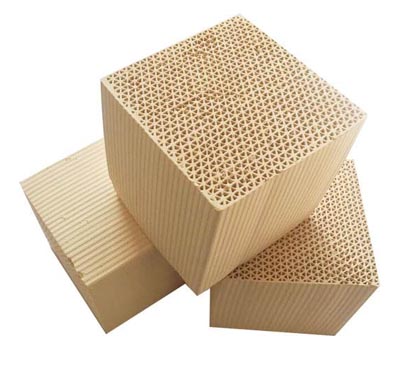
Zeolite molecular sieve Modification of
Most methods of zeolite modification are related to aluminosilicate zeolite. For example, a common modification method is ion exchange of zeolite structure. Synthetic zeolites can often be obtained from sodium salts. Natural zeolites are in the form of minerals, which contain sodium, potassium, calcium, magnesium and other cations. Therefore, it is sometimes necessary to exchange these cations into other ions, for example, exchange sodium ions into ammonium ions in air atmosphere to obtain acid zeolite.
Aluminosilicate zeolites sometimes need dealumination. The dealumination process can be hydrothermal treatment, acid leaching and 200-300 ℃ heat treatment in the case of silicon tetrachloride or hexafluorosilicate. After the above treatment, high silicon molecular sieve can be obtained. The dealumination process will strip the aluminum from the zeolite lattice, which will produce mesopores, so it may lead to the collapse of the zeolite framework. These dealuminated molecular sieves have different uses, such as catalysis. USY zeolite is widely used in catalytic cracking. In addition, hydrophobic zeolites, such as DAY zeolite (dealuminated zeolite with very low aluminum content), show strong adsorption capacity for organic matters in water.
It is a very interesting method of zeolite modification to embed molecules in the holes of zeolite. In proper solution, neutral molecules can be adsorbed on zeolite through proper agitation. This process is very effective for small molecules. The embedding of macromolecules in zeolite can be realized in solution, which depends on the molecular size and the diffusion ability in molecular zeolite channels. For example, iridium carbonyl can be adsorbed on zeolite by adsorbing complex in n-hexane solution. RhCO2Cl2 was introduced into NaY or acidic HY zeolite cages, and rhodium neutral clusters were obtained by treatment in an atmospheric pressure CO atmosphere at room temperature with water.
However, sometimes the size of embedded molecules is larger than the pore size of zeolite. For example, octahedral zeolite contains super cages with a diameter of 13 angstroms, and the window size for entering these super cages is about 7.4 angstroms. Molecules larger than 7.4 angstroms cannot be entered by traditional methods. To overcome this difficulty, macromolecules can be synthesized in zeolite supercages, which is called "shipbuilding in bottle" method. So far, examples of macromolecule embedding include tetrabutyl substituted iron phthalocyanine, perfluoro iron phthalocyanine, cobalt copper, manganese and tetranitro iron phthalocyanine. However, when nitro substituted phthalocyanine is embedded, a complex is formed on the outer surface of zeolite. Using porphyrin complexes, manganese and iron tetramethylporphyrins are embedded in the supercages of Y zeolite.
Another method of embedding transition metal complexes into molecular sieves is to synthesize molecular sieves on preformed transition metal complexes. In order to realize this process, the complex must have good stability in the zeolite synthesis environment and a certain solubility in the synthesis medium. It is reported that the synthesis of mordenite can adopt the gel of dipyridine, pentanitrile or phthalocyanine complex. However, the complex is not effectively embedded in the molecular sieve. It is said that the homogeneous intercalation of transition metal complexes in zeolite X may be realized.
